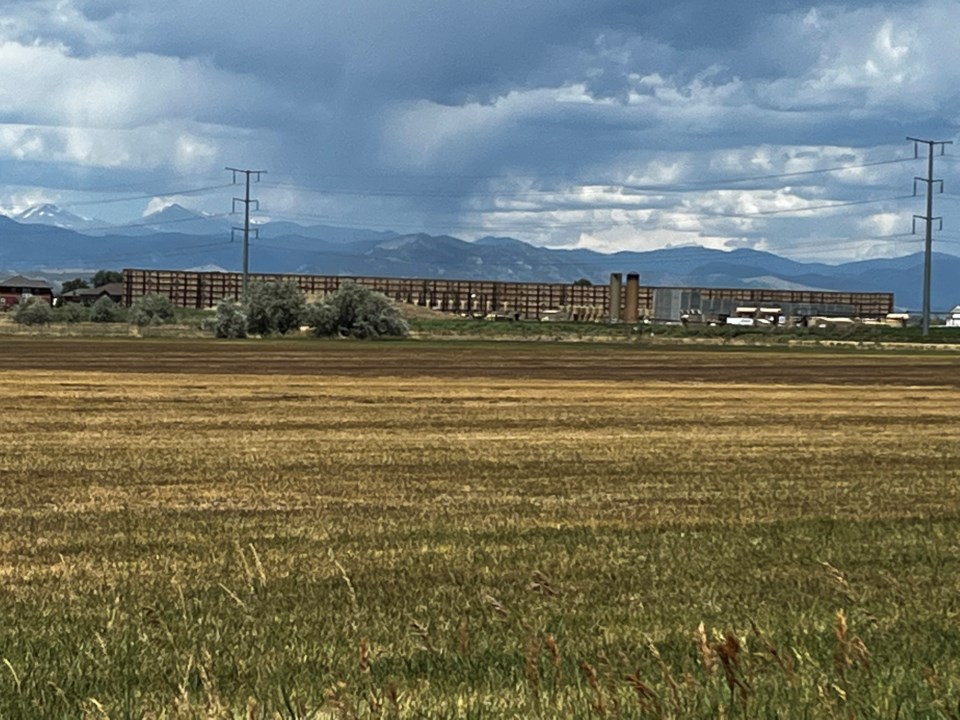Spiked benzene levels at the Cub Creek Energy’s Knight oil and gas well pad near Longmont in unincorporated Weld County prompted state air pollution regulators to issue a warning to the company.
This comes after an advanced air monitoring tool showed a pattern of heightened emissions of benzene at the site, according to a Colorado Department of Public Health and Environment news release.
The company could be fined an undetermined amount if ongoing problems at the well site — located about 700 feet from Longmont’s nearest city limits — are not addressed, the CDPHE news release states.
Benzene levels targeted by the CDPHE at the well site are not expected to lead to health problems, the news release states.
The CDPHE issued the compliance advisory to Cub Creek Energy based on the department’s inspection of the well site in February and June, according to the news release. “The compliance advisory is the first stage in the formal enforcement process,” the news release states. “CDPHE will determine if the company needs to take any other actions to prevent the alleged violations from happening again.”
“Later in the enforcement process, CDPHE will determine if any penalties or fines are appropriate,” according to the news release.
The Cub Creek well is located southwest of County Road 3 and State Highway 66 in Weld County, Jane Turner, Longmont’s air quality and oil and gas program manager, said via email. The wells at the site were drilled during the summer of 2021, Turner said.
The CDPHE installed sensors and deployed the Colorado Air Monitoring Mobile Lab — or CAMML — at the Cub Creek Energy’s Knight Pad, the news release states. Monitoring showed that benzene levels at the site increased at the end of May.
CDPHE then sent an inspector to the site, who observed emissions from a produced water tank, the news release states. The inspector immediately notified the company. Cub Creek Energy took actions to address the emissions that same day.
CDPHE is still monitoring emissions from the facility to ensure there aren’t additional spikes. Benzene measurements have since been lower and less frequent, the news release states.
“Our team acted swiftly to get pollution levels back in check,” Jill Hunsaker, executive director of CDPHE, said in the news release. “We know communities are counting on us to keep their air safe, so our goal is always to respond to emissions as fast as possible. We’ll continue working diligently to protect our fellow Coloradans.”
Cub Creek Energy could not be reached for comment.
State toxicologists do not expect recent benzene levels to pose an immediate harm to health. Prolonged benzene exposure at much higher levels can cause headaches, dizziness, breathing problems, increased heart rate and skin or eye irritation, according to the CDPHE news release.
Nearby residents who are experiencing those symptoms should consult a healthcare provider, the news release states. Residents also can report health concerns related to oil and gas operations at https://oag-health.colorado.gov/ or call 303-389-1687.
The CAMML is just one of the innovative tools CDPHE useds to monitor air quality in communities, the news release states. It is a state-of-the-art trailer that can continuously measure emissions. CDPHE recently started using the CAMML to decide when inspectors should follow up at certain locations.
The CAMML has been deployed to Cub Creek Energy’s Knight Pad location three times since last year. This was in response to community concerns and other monitoring data, the news release states. The department parks the CAMML for weeks at a time at a location to gather data about community exposures.



